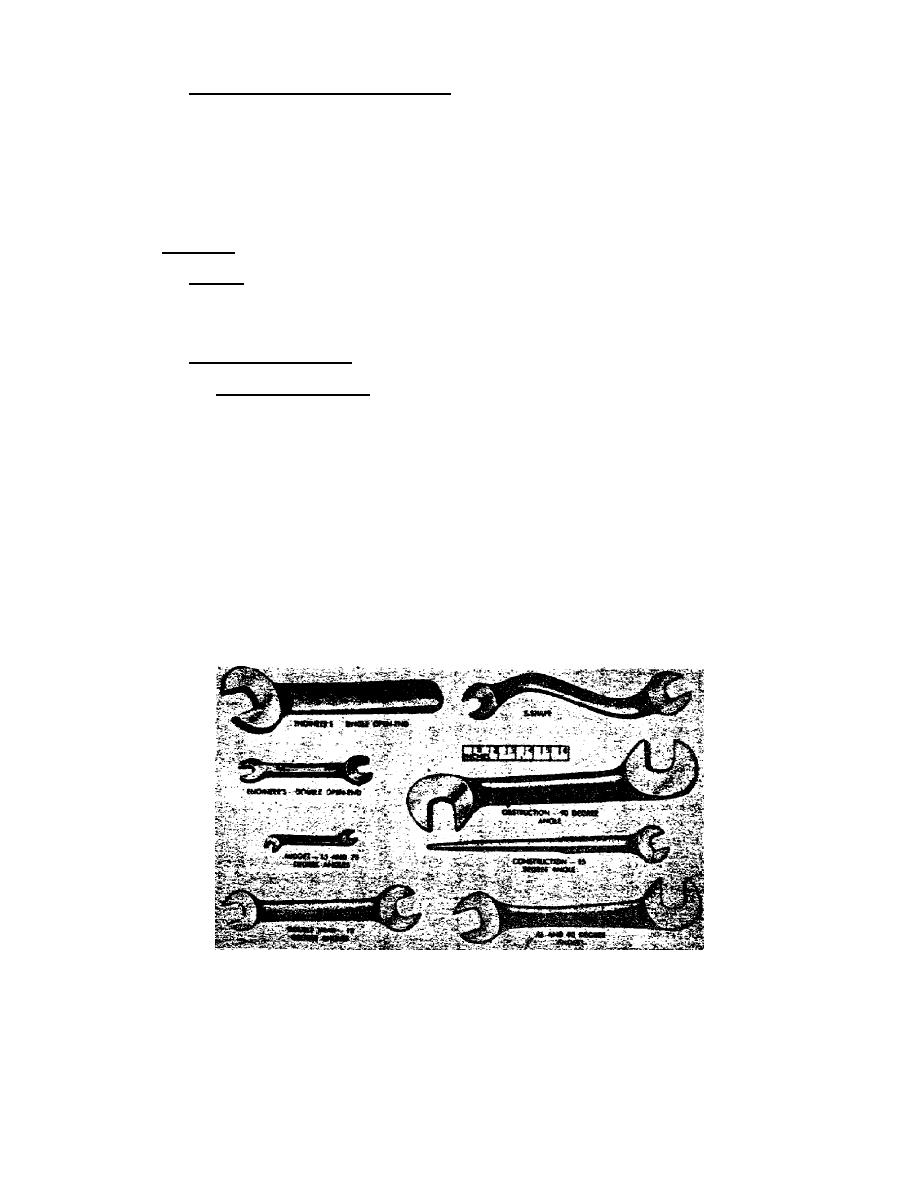
(3) Maintenance of striking tools. Hammers, sledges, or mallets should be
cleaned and repaired, if necessary, before they are stored. Hammer and sledge
faces should be free from oil or other material that would cause the tool to glance
off nails, spikes, or stakes. The hammer heads should be dressed to remove any
battered edges. Inspect the handles of striking tools and make sure they are
secure to the head and do not have any cracks or splinters. Never leave a wooden
or rawhide mallet in the sun, as it will dry out and may cause the head to crack.
A light film of oil should be left on the mallet to maintain a little moisture in
the head.
c. Wrenches.
(1) Types. Wrenches are used to
tighten or loosen nuts, bolts, screws, and
pipe plugs, special wrenches are made to
grip round stock, such as pipe, studs, and
rods. Spanner wrenches are used to turn
cover plates, rings, and couplings. There
are many types of wrenches and each type
is designed for a specific use.
(2) Fixed-end wrenches.
(a) Open end wrenches. Various open end wrenches are shown in figure 4.
They are usually double ended wrenches although some have a single open end. These
wrenches are forged from chrome vanadium steel and heat treated. The size of the
opening between the jaws determines the size of the open end wrench. For example,
a wrench with a 1/2-inch opening in one end and a 9/16-inch opening in the other
end is called a 1/2 x 9/16 wrench. The size of each opening is usually stamped on
the side of the wrench. The openings are from 0.005 inch to 0.015 inch larger than
the size marked on the wrench so that they will easily slip on boltheads or nuts of
that size. Open end wrenches are made in many different sizes. Wrench sizes range
upward in steps of 1/32 inch, starting with 5/32 inch up to 1-3/4 inches. The
common open end wrench is made with the ends at an angle of 10 to 23 to the body
of the wrench so that the user can work in close quarters. Other special
open end wrenches may have the ends at an angle of 45, 60, 75, or 90, or a
combination of two angles. The length of the wrench is determined by the size of
the opening since the lever advantage of the wrench is proportional to its length;
wrenches with larger openings are made longer and heavier to increase leverage and
strength.
Figure 4.
Open end wrenches.
5



 Previous Page
Previous Page
